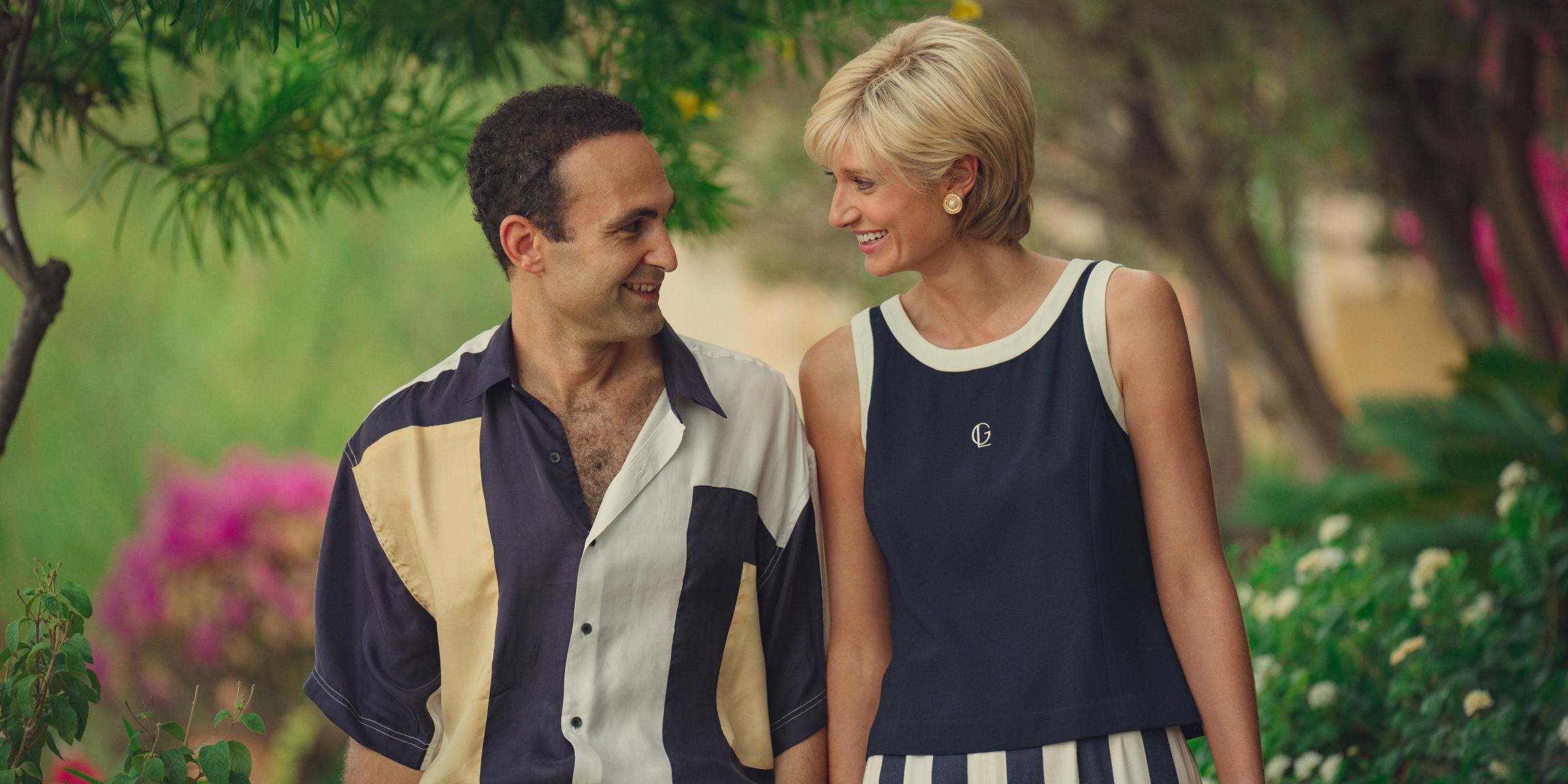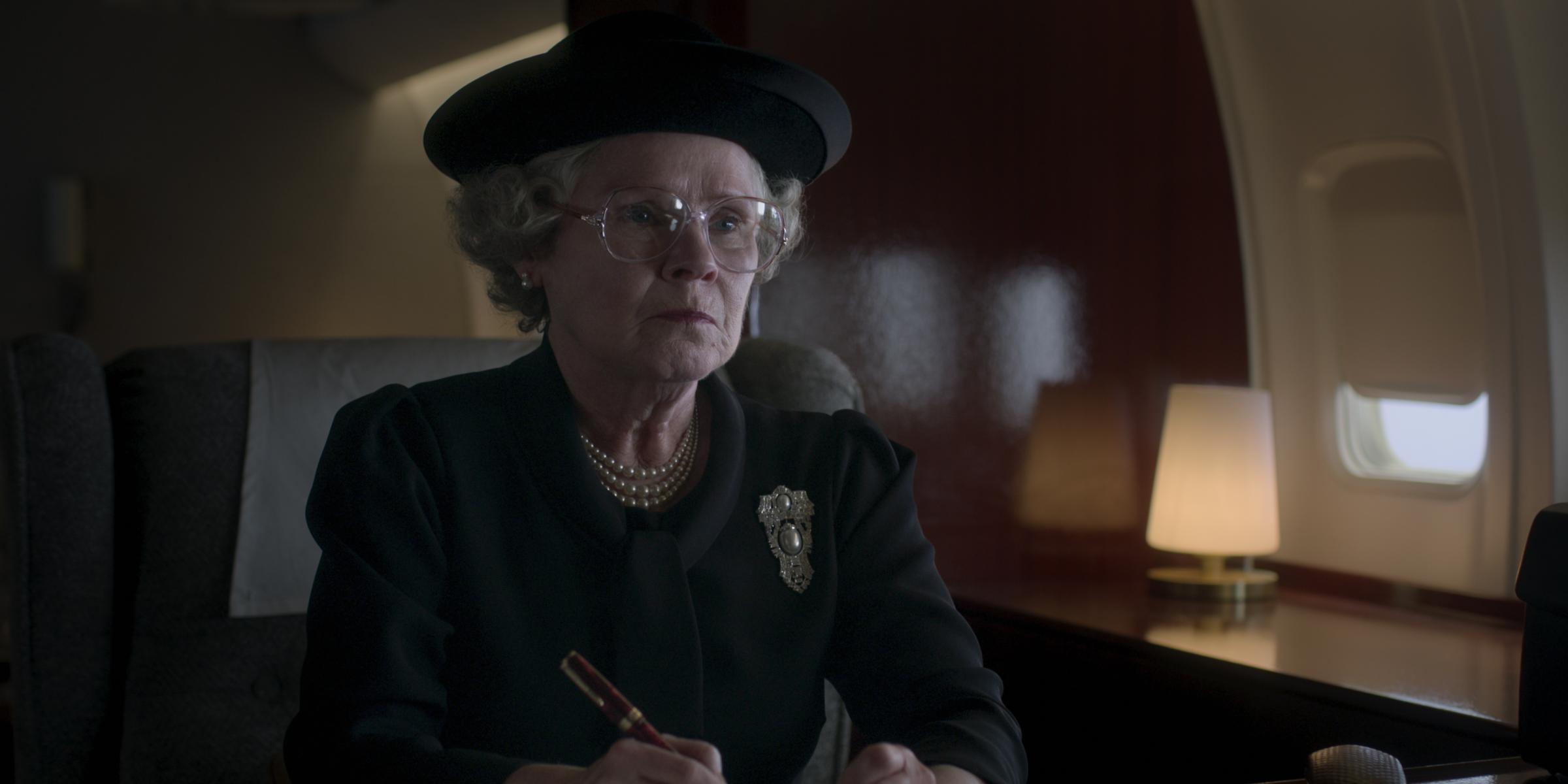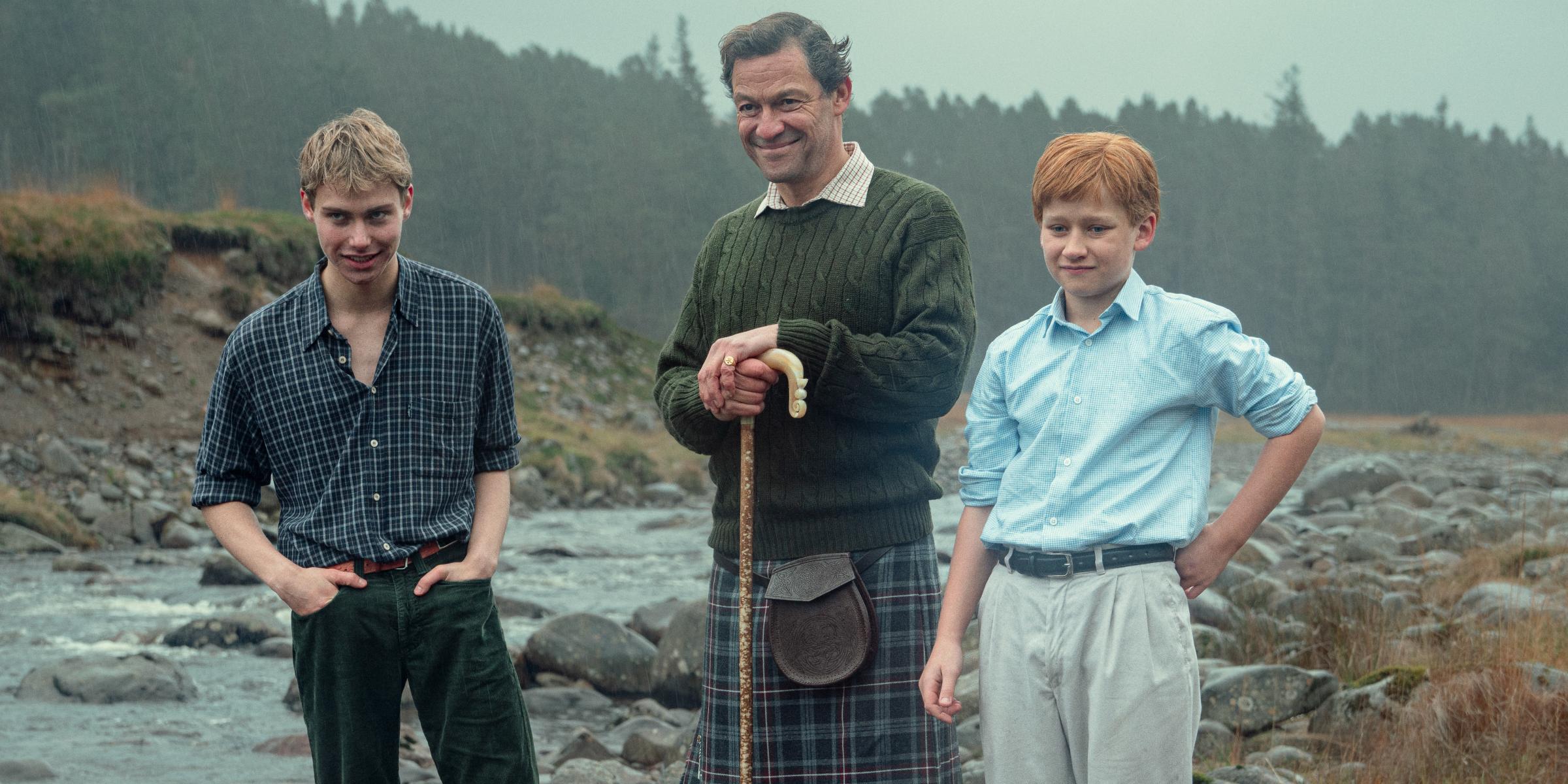The Crown is, to its credit, too tasteful a series to show viewers the grisly car crash that killed Princess Diana, her companion Dodi Fayed, and their driver Henri Paul on Aug. 31, 1997. But we hear it happen twice—first as a sort of prologue to the sixth and final season, whose first four episodes are now available to stream on Netflix, and then, in its proper context, at the end of episode 3, as the most famous woman in the world flees Parisian paparazzi. The car disappears into a tunnel and then, almost immediately, comes the squeal of brakes and the crush of metal.
The parallel scenes make a fitting metaphor for the disappointing first part of Season 6, which unfolds over just a few months and is focused entirely on Diana’s death. Seemingly determined to both avoid the kind of rubbernecking that caused it and do justice to its enormous impact, creator Peter Morgan stretches the princess’ brief dalliance with Dodi, and the Crown’s harumphing response to same, across three slow, sparse, portentous episodes. Yet when it’s not simply boring, the season can be weirdly audacious, milking the mystery of Diana’s last days—as well as, unfortunately, her imagined afterlife—for manufactured poignancy. Like the tragedy on which it fixates, it’s a wreck on a scale that the show has never seen before.

Aging gracefully was always going to be a struggle for The Crown, which has covered more than half a century and rotated in three completely different casts since premiering in 2016. In its first four seasons, the series was a lavish period drama, solemnly contemplating the sacrifices and scandals of Britain’s royal family. Played first by Claire Foy and then by Olivia Colman, Queen Elizabeth II was the quasi-tragic heroine—a dutiful monarch whose stodgy remoteness alienated her from the family she led. Over and over again, we watched her privilege tradition above happiness, humanity, love. She paid in isolation. After a while, Morgan’s constant reminders of how much the monarchy sacrificed to maintain its place in British society got old.
So it was a bit of a relief when last year’s fifth season marginalized the Queen, now played by Imelda Staunton in the least vivid of the three performances, in favor of a new generation. Some viewers found Morgan’s shift to focus on then-Prince Charles (a miscast Dominic West) and his iconic wife, played by a vital and sensitive Elizabeth Debicki, tawdry. We got all the sudsy details of Charles and Diana’s divorce, Diana’s bombshell Panorama interview, the “revenge dress” that symbolized her freedom from the Firm. Even Tampongate had its moment in the spotlight. Maybe these events didn’t carry the geopolitical weight of Season 2’s Suez crisis storyline. But they revealed the straining seams of an institution that was finally in danger of coming apart. And they represented something new for a show that had become as predictable as the Queen.

It’s not hard to imagine why the team behind The Crown, which ended Season 5 in mid-1997, would have wanted to spend almost half of its final, 10-episode season on Diana’s last days. Surrounded by weaker performances from Staunton and West, Debicki had become as much a focal point for the show as the Princess was for her people. She remains riveting in Season 6, endowing the newly single Diana with a hard-won wisdom that goes a long way toward selling Morgan’s silliest gambits. These include a narratively convenient heart-to-heart between Diana and Dodi (Khalid Abdalla) just before their fateful flight through Paris, in which she refuses his marriage proposal but urges him to stand up to his conniving, social-climber dad, Mohamed (Salim Daw), whose attempt to orchestrate the union slots him neatly into the villain role. “It’s motherhood that has consistently made me happiest,” Diana confesses to Dodi, in case viewers hadn’t already registered the irony that she was supposed to be home with her sons that night.
Later, in what is easily the show’s worst creative decision to date, Diana and Dodi appear from beyond the grave, to assuage the Windsors’ and Mohamed’s guilt and helpfully advise them on how to process their respective deaths. Whether they’re supposed to be literal ghosts or simply figments of the other characters’ imaginations isn’t clear. Either way, these scenes cement the impression that The Crown has devolved into a mega-budget Lifetime Original Movie.

Throughout it all, the royal family does what it does best: it stews. Holed up at Balmoral for the summer, the Windsors turn everything from Charles’ resurgent romance with Camilla Parker Bowles (Olivia Williams) to the media’s obsession with his ex to the question of how publicly they will mourn Diana into a game of PR chess. Once content to let characters’ actions speak for themselves, Morgan now peppers his dialogue with redundant analyses of well-established interfamilial dynamics. Elizabeth stuffily observes, of the media circus around Diana: “One would almost feel sorry for her if one weren’t so cross with her.” Charles points out that, in the wake of Diana’s death, the Queen seems “unable to mother the nation, precisely as she was unable to mother us.” Genuinely affecting material, like William (Rufus Kampa) and Harry’s (Fflyn Edwards) grief, gets crowded out by the same old royal stage-managing.
It was never going to be easy to get one of history’s most widely mourned, obsessively documented deaths right, but Morgan certainly had options besides swinging back and forth between the doldrums of Balmoral and a maudlin treatment of Diana and Dodi’s ambivalent romance. What’s baffling is how far these episodes stray from the structure of previous seasons, which were often at their best when filtering Elizabeth and her family through the perspectives of the regular people whose lives they touched, for better or worse. When Charles and Diana finally divorced, near the end of Season 5, it was an inspired choice to juxtapose their rarefied problems with those that plagued a handful of other couples who got divorced on the same day.

Surely the death of the People’s Princess merited some reflection on her relationship with the public. But on the rare occasions when Season 6 looks beyond Diana, Dodi, and the Crown, its observations are superficial. The second episode draws a contrast between Mario Brenna, the Italian paparazzo who made a fortune snapping photos of Diana on the Fayeds’ yacht, and Duncan Muir (Forbes Masson), a Scottish photographer hired to shoot wholesome portraits of Charles and his sons. But aside from The Crown’s latest reminder that behind every photo splashed across the front page of a tabloid is a manipulator contemplating angles, the significance of this comparison never becomes apparent (nor do we find out why Brenna speaks directly to the camera, as though he’s in a documentary). A Parisian walking his dog in the season’s opening scene, who calls authorities to report the crash, is a framing device, not a character.
Morgan seems desperate to wring meaning out of Diana’s death—so desperate that he invents for her and Dodi a magical 11th-hour epiphany and three discrete hauntings. Unfortunately, none of that behind-the-scenes speculation adds up to a shred of novel insight. To understand the phenomenon that was Diana, you have to understand what she meant to millions of people she never met. People The Crown deigns to glance at for the briefest second, as they throw flowers at her casket and weep for her motherless children. “Don’t react,” Prince Philip counsels his grandsons during the procession. “Keep your eyes forward or on the ground.” Morgan heeds this advice too, and his blindered perspective narrows the emotional scope of four crucial episodes.
More Must-Reads from TIME
- Cybersecurity Experts Are Sounding the Alarm on DOGE
- Meet the 2025 Women of the Year
- The Harsh Truth About Disability Inclusion
- Why Do More Young Adults Have Cancer?
- Colman Domingo Leads With Radical Love
- How to Get Better at Doing Things Alone
- Michelle Zauner Stares Down the Darkness
Contact us at letters@time.com